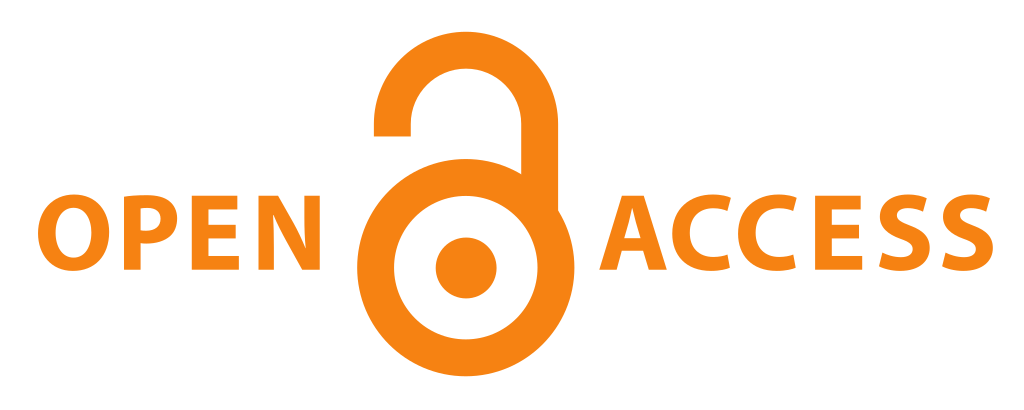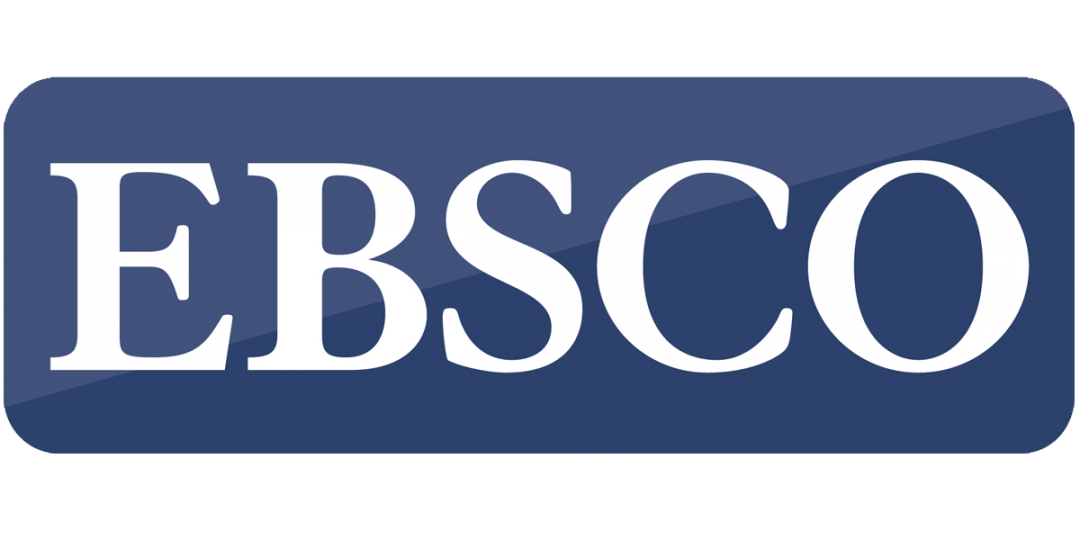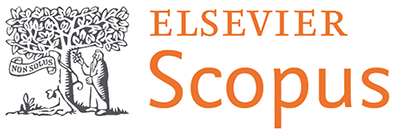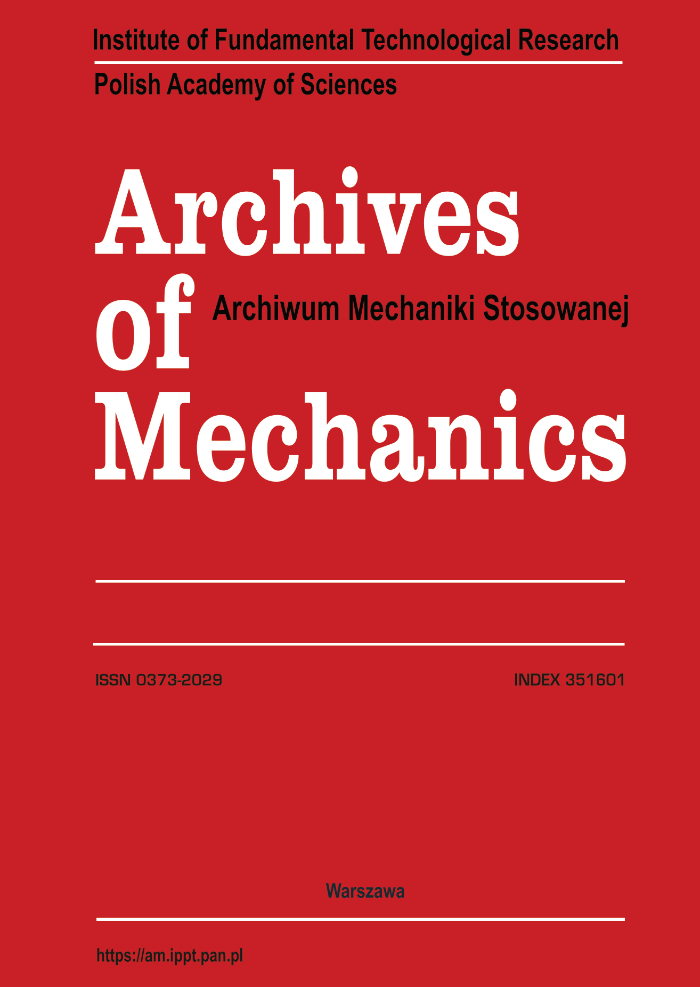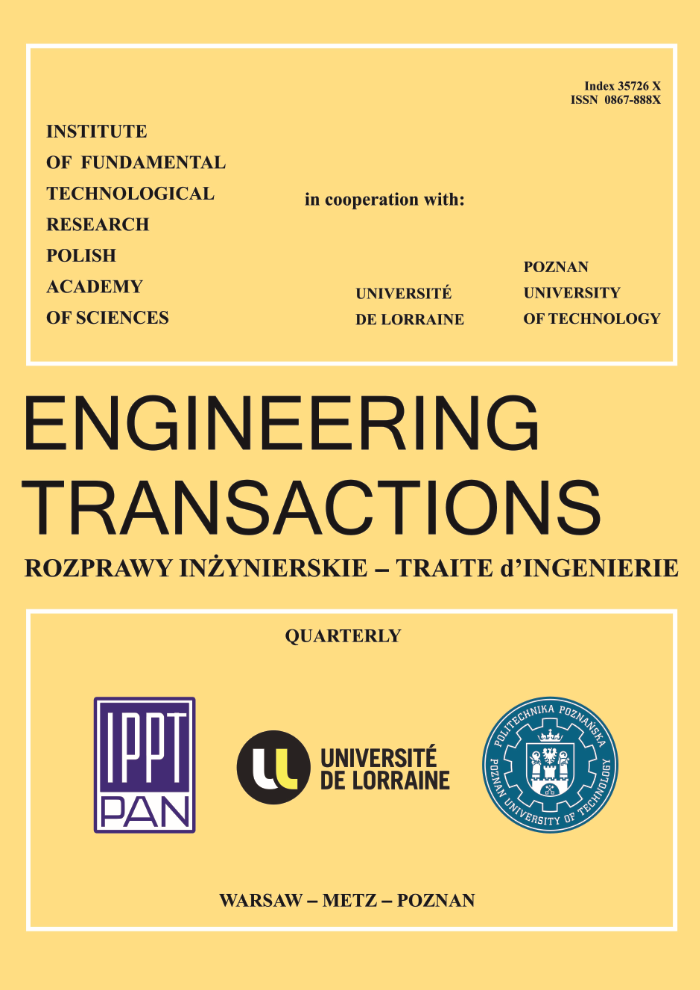All articles (such as research papers, review papers, technical notes, letters to the editor, book reviews) are open submissions, indexed, and peer-reviewed. Chronicles, calendars of events, and erratum are open submissions, indexed, but not peer-reviewed.
Author guidelines
About the articles
Section policies
Peer-review process
- Each publication is evaluated at least by two independent reviewers from outside the author’s affiliation.
- The journal provides a single blind peer review process; the names of reviewers are not revealed to authors. By accepting the review invitation, reviewers declare no conflict of interest between them and authors, by either the direct personal relationship or research collaboration in the last two years preceding the time of review.
- Reviewers are asked to do the review within four weeks.
- The written review contains a clear proposal for the publication or rejection of the scientific article in accordance with the conditions of admission.
- On the journal website, the eligibility criteria for the review of articles and for their acceptance or rejection are available.
Open access policy
This journal provides immediate open access to its content on the principle that making research freely available to the public supports a greater global exchange of knowledge.
Copyright notice
Copyright on any open access article in the Archives of Acoustics published by the Polish Academy of Sciences and the Institute of Fundamental Technological Research Polish Academy of Sciences is retained by the author(s).
The authors grant the Polish Academy of Sciences and the Institute of Fundamental Technological Research Polish Academy of Sciences a license to publish the article and identify themselves as the original publisher.
The authors also grant any user the right to use the article freely as long as its integrity is maintained and its original authors, citation details, and publisher are identified.
The Creative Commons Attribution 4.0 International CC BY 4.0 formalizes these and other terms and conditions of publishing articles.
Exceptions to copyright policy
For the articles that were published between 2019– 2023 (including No. 1 and 2, 2023), the policies are as follows: The Creative Commons Attribution License-ShareAlike 4.0 formalizes these and other terms and conditions of publishing articles: https://creativecommons.org/licenses/by-sa/4.0/.
For the articles which were previously published, before year 2019, policies that are different from the above. In all such, access to these articles is free from fees or any other access restrictions.
Permissions for the use of the texts published in that journal may be sought directly from the Editorial Office of Archives of Acoustics
Privacy statement
The names and email addresses entered in this journal site will be used exclusively for the stated purposes of this journal and will not be made available for any other purpose or to any other party.
Journal fees
There is no fee associated with the publication of articles in the Archives of Acoustics.
Guidelines
Submission of manuscript
Since the Editorial Board does not charge for the publication of articles, we require authors to strictly follow the guidelines given below.
Please take the time to prepare the manuscript to be readable. We also ask you to prepare a cover letter. This is essential. Articles that fail to meet the formal requirements will be disqualified during the initial stage and will not be forwarded for review.
Failure to provide the necessary information or properly format the manuscript may result in its rejection. Please respect each other’s time and work.
Each manuscript is initially evaluated by the Editor and then allocated to an Associate Editor according to a specific subject area. Upon receiving the list of potential reviewers, the Associate Editor’s forwards it to reviewers. The Editor and the Associate Editors make the final recommendation. The reviewers’ opinions are crucial for the Editorial Committee to decide whether the paper can be accepted for publication or not.
By submitting your work to the Archives of Acoustics, you confirm that you have read the guidelines and accept the journal’s formatting and editorial style.
Cover letter
The submitted manuscript must be accompanied by a cover letter containing the following obligatory information:
- why the paper is submitted to the Archives of Acoustics;
- suggestion on the field of acoustics related to the topic of the submitted paper;
- the statement that the manuscript is original, has not been previously published (nor published in a different language than English), nor was it sent to another journal for consideration, all authors have seen and approved the final version of the manuscript being submitted, and the AI tools has not been used to write the article.
- 3–5 names of suggested reviewers together with their affiliations and e-mail addresses, and a brief justification for the choice. Suggested reviewers should be affiliated with other scientific institutions than the affiliations of the author. Note: Please consider scientists from scientific institutions besides your country and, the most importantly, choose scientists who specialize in the field you write about;
- author’s suggestion to classify the paper as a research paper, review paper or technical note;
- information about the participation of individual authors in the process of creating the manuscript.
Style and format of manuscript
- Manuscripts intended for publication in the Archives of Acoustics should be submitted in PDF format.
- Submitted papers must be written in good English and proofread by a native speaker.
- The paper should not exceed 40 000 typographic signs with spaces (about 20 typewritten pages) excluding the reference list. Longer papers may be rejected.
- Text should be submitted with double-lined spacing and in a 12 point font size, A4 format.
- The manuscript must have numbered lines and pages, it is obligatory.
- The article should be structured with numbered sections (excluding the article abstract and acknowledgments): 1., 1.1., 1.1.1., 1.2., 2., etc.
- The title of the paper should be as short and informative as possible.
- The text should be in single-column format.
- A brief abstract must be included (200–250 words).
- The abstract should contain a brief presentation of the aim, methods, results, and conclusions concerning presented research.
- In the manuscript under Authors’ names, each affiliation, including the city and country, should be provided (only if the affiliations are not the same, if the affiliation is the same, one is enough). As well as an e-mail address of one author designated as corresponding author (usually it is the same one that submitted the manuscript).
- At the submission stage, all metadata concerning authors should be provided into the journal system (including affiliations and emails). Both in the metadata on the journal’s website and in the headline of your article, provide the metadata in accordance with what you provided in the ORCID database.
After acceptance, authors must submit all source material (see especially information about Figures). Authors can use their preferred manuscript-preparation software, for example Microsoft Word or any variant of TeX. The journal itself is produced in LaTeX, so accepted articles prepared using other software will be converted to LaTeX at production time.
Title page, abstract, keywords
The title page must contain: article title, author(s) names, affiliation (e.g., department, university, city, country), ORCID (if available, added as footer to each author), corresponding author e-mail, a brief abstract (maximum 200 typographic signs), the keywords should be given (at least three), it is also desirable to include a list of notations used in the paper before introduction.
Article structure
The article should contain information in the following order: title, author(s) names affiliation addresses (if available, with the e-mail addresses of each author) corresponding author e-mail; abstract; keywords related to the topic (at least three); introduction; main content along with equations, figures or/and tables; conclusion; statements; reference list.
The articles should be structured with numbered sections, have page and line numbers.
Other content, such as appendix, discussion, etc., is required only if applies, and should appear after the main text and before the reference list.
Fundings, conflict of interest, authors' contribution of individual authors in the process of creating the manuscript, information are obligatory, and should appear at the end of the manuscript, before the reference list.
Ethical approval, data availability statement, and acknowledgments should be added only if applicable. Obligatory and optional statements are added at the end of the prepared templates for your convenience.
For manuscript preparation, you can use the attached Word or LaTeX template.
Figures, images, and tables
Photographs must be high-quality – with resolution no lower than 300 dpi.
In the case of diagrams and graphs, the use of square brackets is required for unit descriptions in axis. The descriptions of the axes must be written in Times New Roman font (no boldfaced type) and its size adjusted proportionally. Mathematical symbols in the figures should be in italic if correspond to such symbols used in the text.
Nomenclature
Do not use an abbreviation and the full word interchangeably. Give the full name where it first appears, and enter the abbreviation in parentheses. Then use the abbreviation. The exception is: using the abbreviation in a subtitle. If you used full words and abbreviations in the abstract, they have to appear once again in the main text.
Check whether the spelling of the phrase is uniform in all places. If doubted, check the sources to see how specific phrases are entered.
Example:
- Mentioned for the first time […] pulmonary function test (PFT).
- Mentioned for the second time, and so on: […] PFT […].
Math formulae
The formulae to be numbered are those referred to in the paper, as well as the final formulae. The formula number should be written on the right-hand side of the formula in round brackets.
All notations should be written clearly. Special care must be taken to write small and capital letters as precisely as possible (this applies mainly to the letters c and C, s and S, and others whose shapes of the lowercase and uppercase letters differ slightly).
Vectors, matrices, scalars should be denoted by boldfaced type.
Trigonometric functions are denoted by sin, cos, tan, and cot; inverse trigonometric functions – by arcsin, arccos, arctan, and arccot; hyperbolic functions are denoted by sinh, cosh, tanh, and coth. All functions must not be written in italics.
Supplementary material
Supplementary material that is relevant to the manuscript and its understanding should be added at the end of the manuscript as an “Appendix”.
Citations
Instructions for citation and bibliographic references
- References in the text (author(s) and year of publication) are to be cited between parentheses ( ).
- Direct quotations should be between quotation marks – example: “Lorem ipsum” (Novak, 2021).
-
Indirect quotations (i.e., when the author’s idea is explained but not directly quoted) do not use quotation marks or italics. Example:
- The research of mufflers was started by Davis (1954).
-
When an author or group of authors has more than one publication in the same year, a lower case letter is added to the date. Example:
- In two recent studies (Rakowski, 1993a; 1993b) it was suggested that (…).
-
Multiple author citation:
- two authors: both names should be listed in each citation – example: (Rakowski, Miyazaki, 2007),
- three or more authors: use the first author’s name and “et al.” (italics) – example: (Dobrucki et al., 2005),
- two or more publications: use semicolon between different citations – example: (Rakowski, Miyazaki, 2007; Dobrucki et al., 2005).
-
To cite a document produced by an organization, the first time write out the name of the organization in full and give the acronym or abbreviation in square brackets. For subsequent references you may use the acronym or abbreviation. Examples:
- for the first time: Sanitary politics (United Nations High Commissioner for Refugees [UNHCR], 2006, p. 35) suggested that (…);
- for the second time, and so on: Established politics (UNHCR, 2006, p. 45) suggested that (…).
-
When a source has no identified author, cite the first two or three words of the title (in italics if it is a book, between quotation marks if it is an article) followed by the year and the page. Examples:
- In the recent book (Encyclopaedia of Physics, 1993) it was suggested that (…).
- In the article (“The relation of pitch …”, 1979, p. 67) it is held that (…).
- The in-text citation should match the start of the reference in the bibliography/reference list.
-
Using quotations in the text may also be as it is shown in the following examples:
- “Field measurements of bistatic scattering strength (BSSS) are difficult and expensive to acquire at sea, in real conditions” (Blondel, Pace, 2009, p. 101).
- Blondel and Pace (2009) held that “field measurements of bistatic scattering strength (BSSS) are difficult and expensive to acquire at sea, in real conditions” (pp. 101).
-
To cite a work that was discovered in another work, observe the following examples:
- Brown (1967), cited by Smith (1970, p. 27), found (…).
- It was found (Brown, 1967, cited by Smith, 1970, p. 27) that (…).
References
Presenting bibliography/reference list
Items appearing in the reference list should be complete, including surname and the initials of the first name of the author, the full title of the paper/book in English followed by the information on the original paper language.
Providing the DOI link for each item in the reference list to which it has been assigned is obligatory.
- Reference list should be arranged alphabetically by author surname. Put all the entries in one long alphabetical list. Number them from 1 to n.
- Do not list books, journal articles, websites, etc. in separate sections.
- When an author or group of authors has more than one publication in the same year a lower case letter is added to the date. This letters will be used when citing this source in the text.
Examples:- Karamanli A., Aydogdu M. (2019a), Buckling of laminated composite and sandwich beams due to axially varying in-plane loads, Composite Structures, 210: 391–408, https://doi.org/10.1016/j.compstruct.2018.11.067.
- Karamanli A., Aydogdu M. (2019b), On the vibration of size dependent rotating laminated composite and sandwich microbeams via a transverse shear-normal deformation theory, Composite Structures, 216: 290–300, doi: https://doi.org/10.1016/j.compstruct.2019.02.044.
-
Book, encyclopaedia, and ISO/ASTM standards titles should be italicized:
Author’s surname, initials (year), Title of the Book [language of publication – if other than English], edition (if later than the first), Publisher Name, Place of Publication.
Examples:- American Psychological Association (2001), Publication Manual of the American Psychological Association, 5th ed., Washington D.C.
- Encyclopaedia of Physics (1993), 2nd ed., McGraw-Hill, New York.
- Varshneya A. (1944), Fundamentals of Inorganic Glasses, p. 111, Academic Press, New York.
- Moore M.H., Estrich S., McGillis D., Spelman W. (1984), Dangerous Offenders: The Elusive Target of Justice, Harvard University Press, Cambridge.
- Strunk W., White E.B. (1979), The Elements of Style, 3rd ed., Macmillan, New York.
- International Organization for Standardization (1998), Acoustics — Determination of acoustic properties in impedance tubes. Part 2: Two-microphone technique for normal sound absorption coefficient and normal surface impedance (ISO Standard No. ISO 10534-2:2023), https://www.iso.org/standard/81294.html.
- ASTM E2611-19 (2019), Standard test method for normal incidence determination of porous material acoustical properties based on the transfer matrix method, ATM International.
- American National Standard (2008), Criteria for evaluating room noise, Standard ANSI S12.2:2008.
If the book is in a language other than English:
Author’s surname, initials (year), Title of the Book translated to English [in: original title of the publication], edition (if later than the first), Publisher Name, Place of Publication.
- Nowicki A. (1995), Basics of Doppler Ultrasonography [in Polish: Podstawy ultrasonografii dopplerowskiej], WN PWN, Warszawa.
-
List up to six (6) authors. If there are seven (7) or more authors, list the surname and initials of the first one and then add “et al.”.
- instead of: Kraśkiewicz C., Klekot G., Książka P., Zbiciak A., Mossakowski P., Chacińska P., Al Sabouni-Zawadzka (2024), Filed experiment as a tool to verify the effectiveness of prototype track structure components aimed at reducing railway noise nuisance, Archives of Acoustics, 49(1): 61–71, http://doi.org/10.24425/aoa.2024.148770.
- please do: Kraśkiewicz C. et al. (2024), Filed experiment as a tool to verify the effectiveness of prototype track structure components aimed at reducing railway noise nuisance, Archives of Acoustics, 49(1): 61–71, http://doi.org/10.24425/aoa.2024.148770.
-
Information about editors of book:
Editor(s) surname, initial of the Editor(s) name, initials [Ed./Eds] (year), Title of the Book, edition (if later than the first one), Volumes (if there are more than one), Publisher Name, Place of Publication.
Examples:- Crocker M.J. [Ed.] (2007), Handbook of Noise and Vibration Control, John Wiley & Sons, Inc., New York.
- Klinke R., Hartman R. [Eds] (1983), Hearing – Physiological Bases and Psychophysics, Springer, Berlin, Heidelberg, New York, Tokyo.
-
Chapter in edited book:
Surname of the author(s) of the chapter, initials (year), Title of chapter, [in:] Title of the Book, Editor(s) surname, initial of the Editor(s) name, initials [Ed./Eds], pp. start and end of chapter page numbers, Publisher Name, Place of Publication.
Examples:- Rakowski A. (1991), Context-dependent intonation variants, [in:] Music, Language, Speech and Brain, Sundberg J., Nord L., Carlson R. [Eds.], pp. 203–211, MacMillan Press, London.
- Berlincourt D.A., Curran D.R., Jaffe H. (1964), Piezoelectric and piezomagnetic materials and their function in transducers, [in:] Physical Acoustic, Mason W.P. [Ed.], Vol. 1, part A, pp. 169–270, Academic Press, New York.
-
Journal article:
Author(s) surname, name initials (year), Title of the article, Title of the Journal, Volume number[boldfaced](issue number): start and end page numbers of article, full DOI link (obligatory) or web URL if applies. Write directly page numbers (not preceded by p. or pp.), if the article is originally in language other than English, do exactly the same thing as with a book, add after a title: [in: title in the original language].
Examples:- Houtsma A. (2007), Experiments on pitch perception: implications for music and other processes, Archives of Acoustics, 32(4): 475–490.
- Sęk A., Moore B.C.J. (1995), Frequency discrimination as a function of frequency, measured in several ways, The Journal of the Acoustical Society of America, 97(4): 2479–2486, https://doi.org/10.1121/1.411968.
- Yori S.A. (2020), Method for calculating the sound absorption coefficient for a variable range of incidence angles, Archives of Acoustics, 45(1): 67–75, https://doi.org/10.24425/aoa.2020.132482.
-
Conference paper in published proceedings (do not forget about DOI if it exists).
Example:- Rakowski A., Miśkiewicz A. (2002), Pitch discrimination of low-frequency tones, [in:] Proceedings of 7th International Conference on Music Perception and Cognition, pp. 538–540, Sydney.
-
Dissertations in congresses and meetings (unpublished).
Example:- Tucker S. (2003), An ecological approach to the classification of transient underwater acoustic events: perceptual experiments and auditory models, Ph.D. Thesis, Department of Computer Science, University of Sheffield.
- Salamon R. (2009), Contemporary military sonar system, Dissertation presented during the 56th Open Seminar on Acoustics, OSA 2009, Goniądz, Poland.
-
Electronic sources:
Author(s) surname, name initials (year), Title, Publisher Name, URL (access: D/M/Y)
If no date is shown on the document, authors should use n.d. (no date). If the author is not given, the reference should with the title of the document. If a document is part of a large site such as a university or a government department’s website, give the name of the parent organization and the relevant department before the URL.
Note: Do not write the web address (URL) within the text of the paper, it should appear only in the reference.Examples:
- Cox T. (n.d.), Sound quality, www.acoustics.salford.ac.uk/res/cox/sound_quality/ (access:
- Deciding your future (2000), University of Portsmouth, Careers Service, www.port.ac.uk/departments/careers/plancareer/deciding-your-future.htm (access: 5.08.2001).
- Alexander J., Tate M.A. (1999), Evaluating web resources, Widener University, Wolfgram Memorial Library, https://www.science.widener.edu/~withers/webeval.htm-0 (access: 21.08.2001).
-
Audio-visual sources – music:
Author’s surname, name initials (date of copyright), Title of the song, [on:] Title of the album [medium of recording], Location: Label (recording date if different from copyright date).
Example:- Puccini G. (1990), Nessun dorma, [on:] Carreras Domingo Pavarotti in concert [CD], Decca, London.
Submitting your manuscript
Submission checklist
As part of the submission process, authors are required to check off their submission’s compliance with all the following items, and submissions may be returned to authors that do not adhere to these guidelines.
- Names of the authors with affiliations and e-mail addresses.
- Manuscript saved as PDF format.
- URLs for the references have been provided (if exists).
- DOI links for the references have been provided (if exists).
- The text adheres to the stylistic and bibliographic requirements outlined in the Author Guidelines.
- The cover letter containing all required information is prepared.
- The manuscript has page and line numbers (it is obligatory).
- The text is double-spaced; 12 point font; italics or bold is employed if necessary; all illustrations, figures, and tables are placed within the text at the appropriate part of the text, rather than at the end. Note: Tables and equations should not be added to the manuscript as pictures.
Suggest reviewers
The authors have to prepare a list of 3–5 names of suggested reviewers together with their affiliations and e-mail addresses, and a brief justification for the choice. Please consider scientists from scientific institutions besides your country and, the most importantly, scientists who specialize in the field you write about; suggested reviewers should be affiliated with other scientific institutions than the affiliations of the author.
Submit online
Manuscripts intended for publication in the Archives of Acoustics may only be submitted via an on-line procedure in PDF format. The online submission is easy and quick – in 5 steps you are able to submit the manuscript to the system.
Editable files (e.g., Word, LaTeX) are required to typeset your article for final publication. All correspondence, including notification of the editor's decision and requests for revision, is sent by email.
After receiving a final decision
Final decision and next step
After acceptance, Authors will need to send Word or LaTeX source files of the final version of articles as well as original source files of figures (drawings/diagrams/graphs or photographs). All figure/photo files must be high-quality – with resolution no lower than 300 dpi.
For diagrams and graphs, vector EPS or vector PDF files are the most useful. Most drawing and graphing packages (e.g., Mathematica, Adobe Illustrator, Corel Draw, MATLAB) allow the user to save files in one of these formats. Make sure that what you are saving is a vector graphics and not a bitmap.
Please also include the original data for any plots. This is particularly important if you are unable to save Excel-generated plots in vector format. Saving them as bitmaps is not useful; please send the Excel (.xls) spreadsheets instead.
Each figure should be saved as a separate file – the name of the file has to be numbered (do not title the figure files with a figures descriptions). Pack all figure files into a single archive (zip, tar, rar or other format) and then upload to the journal website.
Note: The submitted manuscript is sent for linguistic verification. During this process, we focus exclusively on the linguistic and formal aspects of the text. This includes ensuring consistency with formal scientific style, improving grammar and clarity, and minimizing unnecessary repetition.
We do not make any modifications related to the scientific content, such as interpretation of results, methodology, or theoretical assumptions. If any sections raise doubts or are unclear from a linguistic perspective, they are highlighted and left for the author’s review during the proofreading stage. The final responsibility for the content and meaning of the manuscript remains with the authors.
All linguistic changes are made with the intention of improving clarity and style, without altering the intended meaning of the text.
Proof corrections
After formatting your manuscript into Archives of Acoustics format, your article will be sent to you for authors’ proofreading. Read the article carefully, check the typesetting, completeness, and correctness of your article, tables and figures, and please thoroughly review each equation and/or symbol employed in your manuscript to ensure the absence of any inconsistencies.
Important: Significant changes at the proofing stage will only be considered with the approval of the journal editors.
Publishing agreement
With proofreading you will receive an open access licence to publish to sign. This licence is sorely important for us, without it we are not going to publish the article. The licence is about the Creative Commons Attribution 4.0., which allows users to distribute, remix, tweak, and build upon your work, even commercially, as long as they credit you for the original creation.
By signing the licence, the author(s):
- warrant that the article is original, is not under consideration;
- has/have full authority to enter into this licence and in granting rights to IPPT PAN are not in breach of any contract or other obligation;
- has/have taken due care to ensure the integrity of the article;
- explicitly reserve(s) copyright and all other intellectual property rights in the article except as specifically provided in this licence.
Open access
After your final corrections, the article will be published as an online first article with a DOI number. Both online first and final publications are open access, without any hidden fees.

